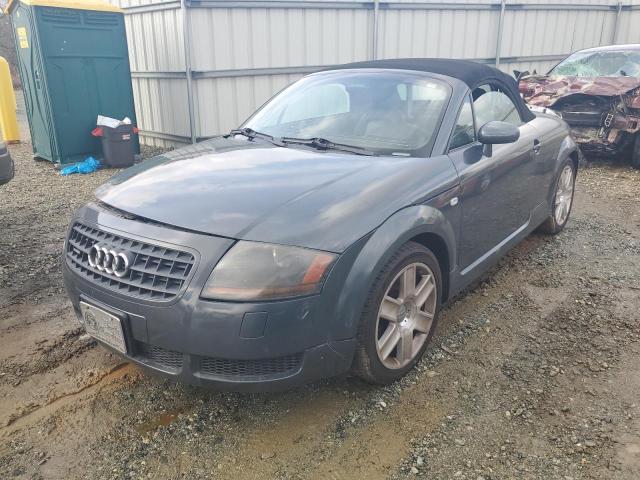You made it - as soon as you put that temporary tag on you're ready to go. Drive wherever you like, don't get it safety or emissions inspected if you don't want, just have fun. The tag will expire in 10 days, but you've got until then to make a decision.
What I like to do here is gradually expand the sphere of comfortable action with an unknown quantity. Cruise down the driveway. Then around the block. Up to 45 on a back road, into town, then back. You never really know what's going to happen at this stage. On the  infiniti M45 for example, there was a loud thunk from the rear differential and the engine shut off. Started right back up and never happened again. The
infiniti M45 for example, there was a loud thunk from the rear differential and the engine shut off. Started right back up and never happened again. The  Audi TT Quattro had a huge backfire under hard acceleration indicating a bad coil pack that needed to be replaced before emissions tests. The
Audi TT Quattro had a huge backfire under hard acceleration indicating a bad coil pack that needed to be replaced before emissions tests. The  BMW 545i had 90% of the oil leave the engine once it got up to pressure. If you're doing this for fun, and you love cars - this is really quite enjoyable.
BMW 545i had 90% of the oil leave the engine once it got up to pressure. If you're doing this for fun, and you love cars - this is really quite enjoyable.
Joy has a financial component in this context. That M45 was so much fun, but would not pass inspection without new catalytic converters which cost nearly double the wining bid. That one meant I sold it immediately without further work.
Coil packs are about as easy as it gets, so I dropped that one in and got it inspected.
The BMW 545i was a learning experience. I should have let it get up to temperature and pressure before getting the temporary tag. Then I would have had more information before getting the temporary tag. As it was I ran out of time and the tag expired, so I had to go back and get another one now that it could move and hold the oil. Totally worth it though as that car was amazing.
Learn how to work on cars
At this point you may notice the knowledge gaps between the theoretical and practical knowledge of how to repair vehicles. Youtube resources are fantastic, literally industry changing and will cover everything you need to know. What I found missing was some broader level guidance with which to provide a simple set of technician first principles. Not ICE first principles or even major component theoretical work. More like a knowledge set that covers what it actually takes on a day to day to work with these vehicles. Here's some books the author found extremely helpful to fill this gap.
What about working under the car? The author never saw this spelled out in detail anywhere, but there a re a variety of different strategies you can use. Here's a breakdown of some of the different techniques for under-vehicle access and repairs.
How do you know when to sell it?
What really helps here is a mental framework that you can execute when it comes time to sell. Each vehicle has a variety of inputs that cannot be pre-determined until you truly experience the vehicle. For example, your joy level on a surprising feature or in-person viewing can offset a repair cost. The same repair cost on a uninspiring vehicle changes the calculus.
Selling it while it's running is generally more fun. Being able to drive it out of the driveway and into the street to have it picked up by a tow truck is generally a more fun experience that limp mode-ing it to the shop and waiting for a few days to get an estimate then having it towed from there.